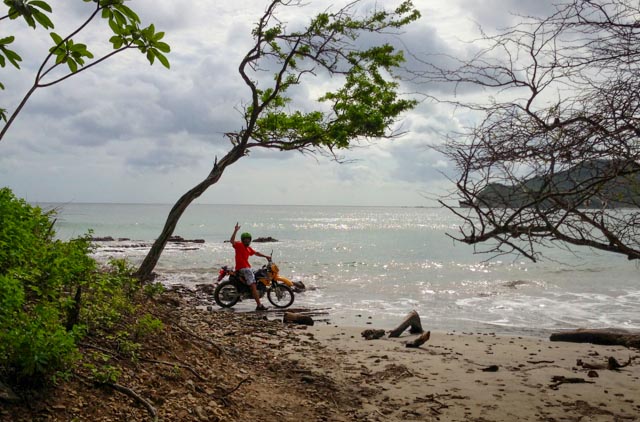 |
| The wrinkled, two-inch foot of a baby three-toed sloth in Cahuita's Sloth Sanctuary. |
Nestled into a sparsely-populated area of the Caribbean coast not far from the border with Panama, Cahuita remains an off-the-beaten track spot. Its roads are mainly dirt and its beaches are mostly deserted. And oh yes, many of its residents are of the two- and three-toed variety.
Whether they're walking a high wire above your head at dinner or lurking in the trees just outside your hotel room, there's a strong chance you're within just a few feet of a sloth, whose name "perezoso" in Spanish means "lazy."
Want to see the animals hanging out in their natural environment?
 |
| The Sloth Sanctuary's "Buttercup." |
Entrance is free, though donations are welcome and hiring a local guide will really help improve your chances of animal sightings. Also, depending on the tides, there may be trash on the deserted beach...great opportunity for a beach clean up!
Would you prefer to see sloths in a more controlled environment?
Stop by the world's largest sloth sanctuary, aptly named The Sloth Sanctuary, home to more than 150 rescued animals. Unfortunately, the Sanctuary closed its volunteer program on August 1 of this year, just after our visit. However, visitors are still allowed to get up close and personal with these slow-moving critters.
If you're lucky, your guide may even let you touch one of the longtime resident's fur, which oddly enough can provide a home to moths, beetles, cockroaches and even live algae. A tour of the facility also includes a creek canoe trip through the surrounding jungle. We saw howler monkeys, sloths, crocodiles, and lots of birds, including an American Pygmy Kingfisher.
Love sloths as much as we do? Check out these links for some fun facts, fun facts, and even more fun facts about these often misunderstood creatures.
 |
| A two-toed sloth named Mick caught in during one of his frequent naps. Sloths sleep up to 20 hours each day. |
 |
| Kip picking up trash at Sloth Creek in Cahuita Park. |
 |
| Yes, this is a "sloth crossing" road sign. |
 |
| Visitors to Cahuita will find sloth souvenirs galore, including these cute pencil sharpeners. |


.jpg)
.jpg)

.jpg)
.jpg)
.jpg)




























